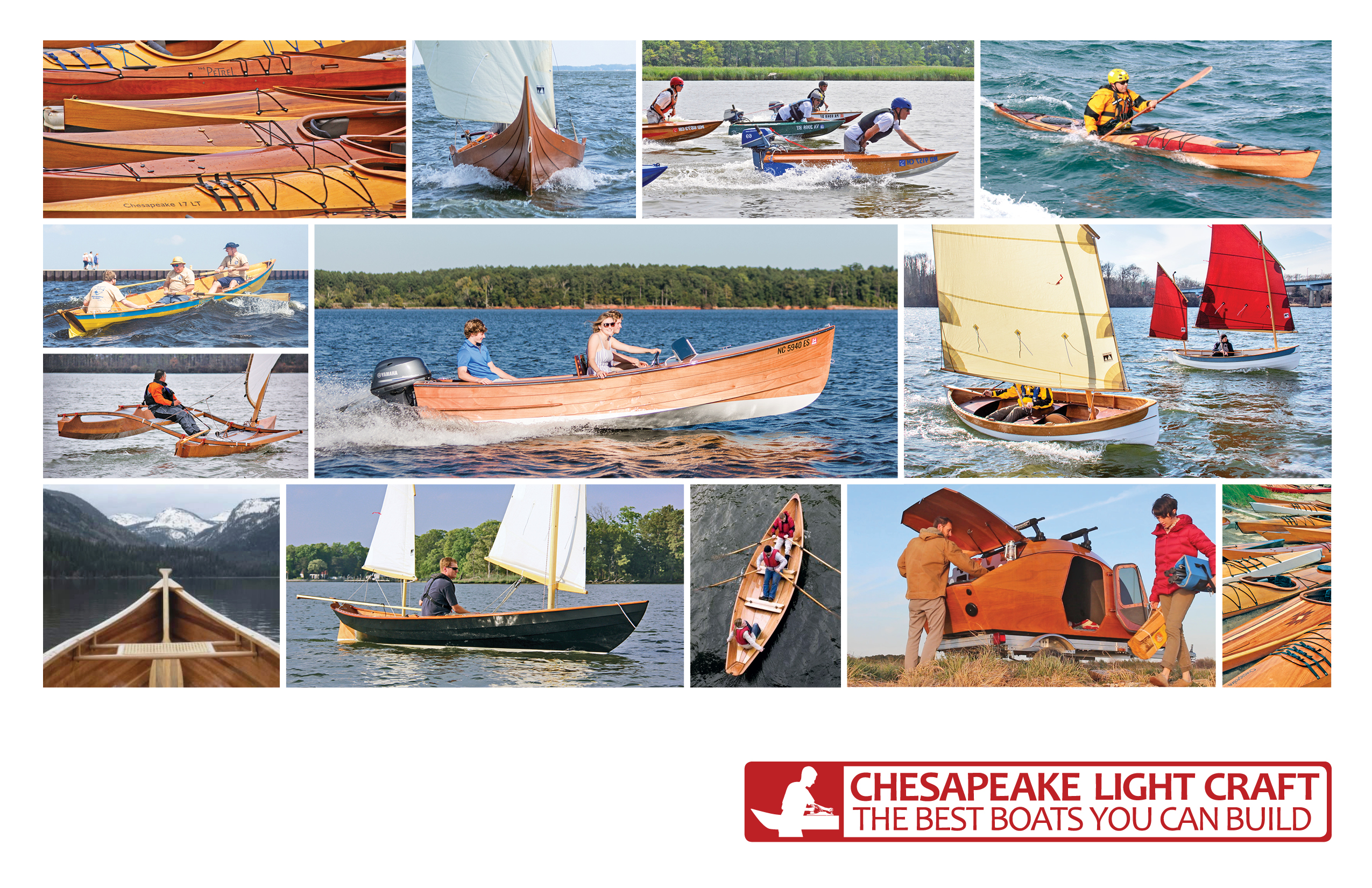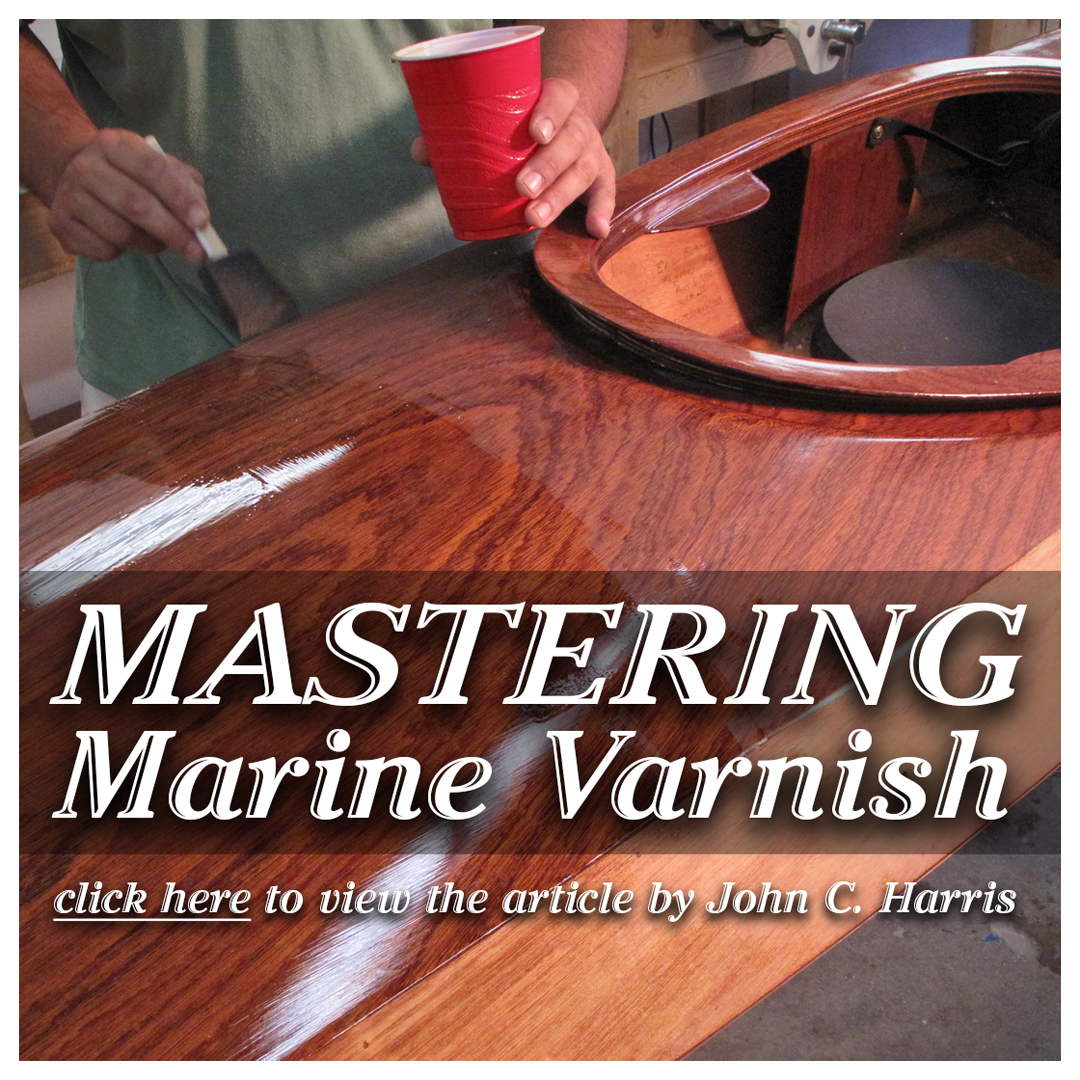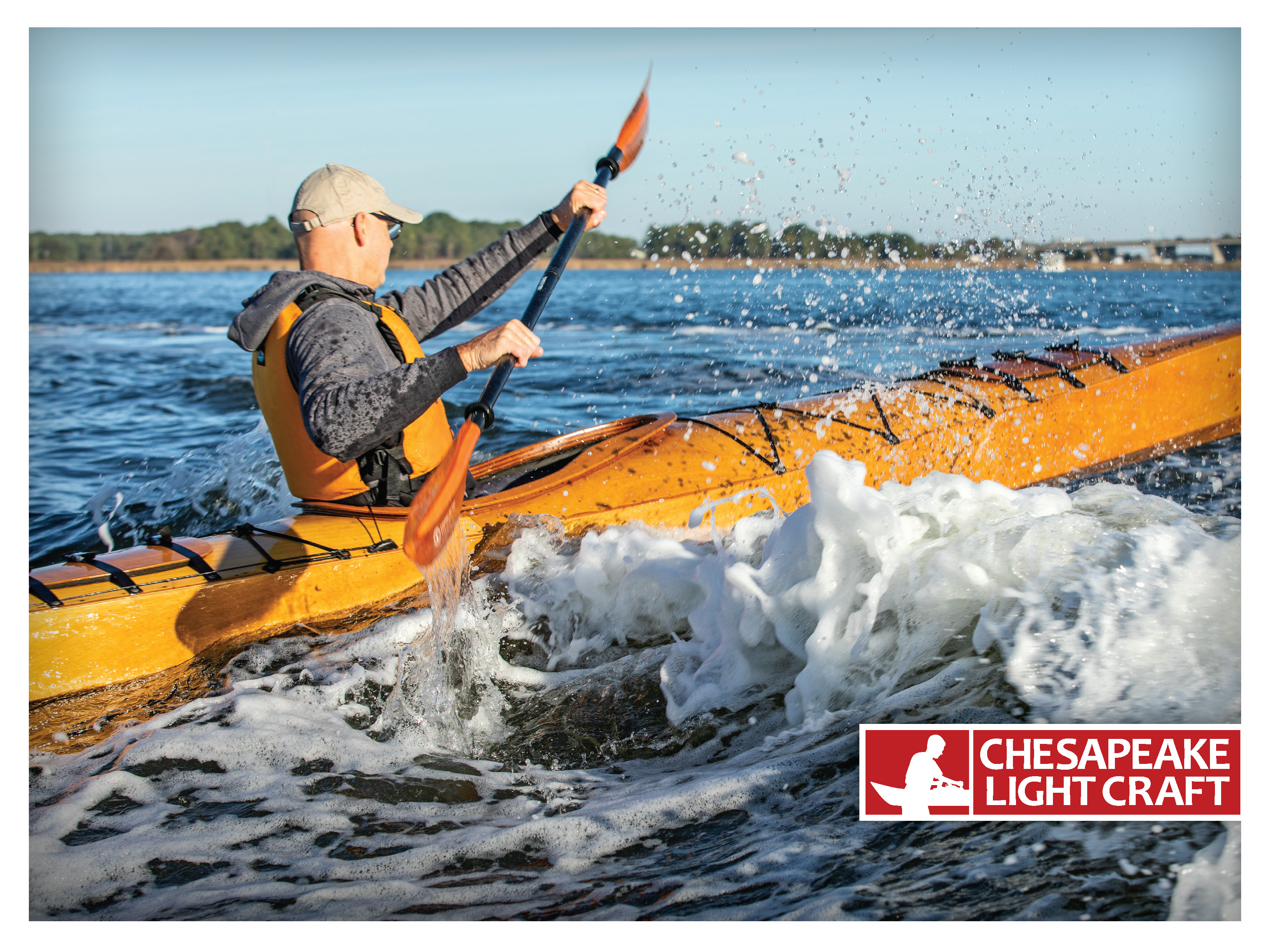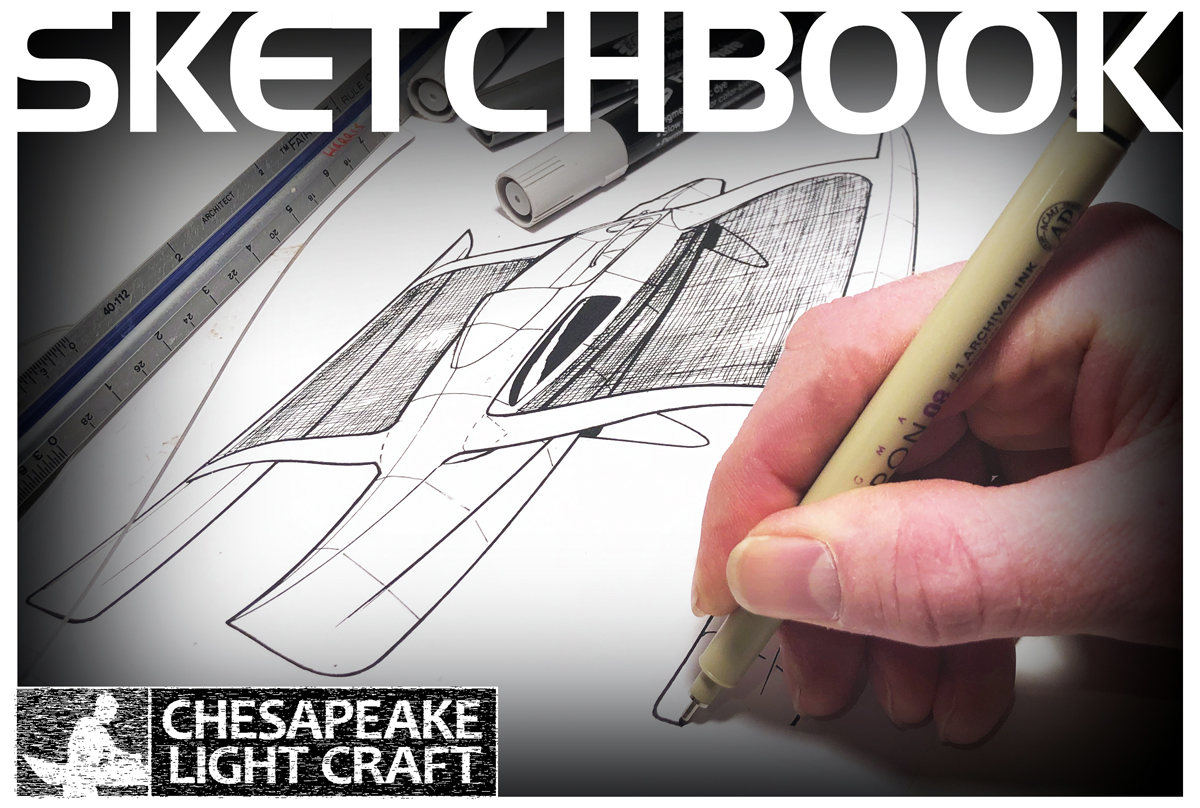


MILL CREEK 16.5 REVIEW by Alan & Beryl Bright
The Mill Creek™ is another stitch and tape craft from the extensive range of kits from Chesapeake Light Craft in the USA supplied here [UK] by Fyne Boat Kits. I tried the 16'6" (5m) version - there are also 15' and 13' (4.6 &4m) models because of its greater versatility even if it will mainly be used solo. The extra length is easily stored in the average garage and she passes the true test of a car top-able craft in that one person can easily lift her genuine 55 lbs (25 kg) on to a roof rack. This weight is achieved because the hull is entirely constructed from just four sheets of 1/4" and 1/8" (6mm & 4mm) plywood.
We arrived at Hugh and Paul's premises at Bowness-on-Windermere to find the lake mirror smooth. Our hosts were a little concerned at the lack of wind having already set the sailing rig into their demonstrator; I tried to sympathise while secretly hiding my joy at being able to row in such perfect conditions! We quickly removed the rig and dropped my Oarmaster unit into the cockpit, converting this multi-role craft into a small sculling skiff.
The Mill Creek's™ flat bottom not only simplifies construction but also enables her to be carried right side up on a roof rack, providing masses of storage space inside for light gear. The obvious increase in stability and shallow draught are also very tangible benefits without this producing a boxy appearance; the two planks each side create for me a very attractive on-the-water appearance. The flat bottom enables a standard sliding seat unit to be fitted quickly and easily without detracting from her main role as a kayak.
With the lake undisturbed by any other boat movement, I shipped the 10' (3m) carbon sculls usually reserved for my racing shell and enjoyed one of the pleasantest rows ever. Bringing myself back to the matter in hand as I approached the far shore in double quick time, I decided I had better put her through a few tests. Stability from the 33" (0.84m) beam is excellent and a novice should quickly be able to relax and enjoy the experience. Rather surprisingly, I found directional stability on what is a comparatively short boat without any skeg beneath to be good; I normally scull a 26' (5m) long shell with skeg, so an objective comparison is easy! I can only assume that her immersed lower chines create the effect of running on rails. Her short length makes her easy to manoeuvre, easily turning in her own length by backing and pulling on alternate oars. Fore and aft trim was achieved merely by placing the sliding seat unit in the middle of the cockpit but when used as a rowing skiff, the Oarmaster precludes carrying a passenger. Plenty of stowage space and a total load capacity of 450 lbs (204 kgs) will enable the more adventurous to camp cruise, either kayaking or sculling. The return to the jetty required my crossing the wakes of some ferries which proved her stability and dry ride when conditions are less favourable.
With the rowing unit removed, we set up the standard sailing rig, which consists of a small lugsail set on an unstayed aluminium mast, with yard and boom of Douglas fir. Leeway is counteracted by the addition of a profiled leeboard simply clamped to the cockpit coaming.
With the wind was still rather light for a truly meaningful sail, I took her on a broad reach out to what I hoped would be a breezier area and while unexciting, this did allow me to check out the cockpit ergonomics. I certainly found her comfortable solo but with the mast stepped at the very forward end of the large cockpit, an additional passenger would be easily accommodated. Incidentally, there is no truth in the rumour put about by Hugh and Paul that I fell asleep at this time, with the boat calmly sailing herself across Windermere.
In such conditions any reluctance to tack would have been excusable but although she needed to be sailed gently, at no point did she get caught in stays. In fact, convinced the first time was a fluke, I deliberately pushed her through several tacks in succession all of which she performed admirably. The leeboard was certainly effective and impressed me; like many sailors brought up on centreboard dinghies I was at first sceptical that such a simple solution can work but it certainly does. Returning to shore required manoeuvring through a fleet of moored craft but the rudder was positive and gave a good response.
Finally, Hugh accompanied me as we tried her out in the role most will put her to, that of a double-paddled kayak. Her performance was excellent and although Hugh and I had never paddled together before, the stability and easy tracking compensated for our sometimes-rough handling. This is a craft which will certainly be forgiving to the inexperienced, as well as having sufficient speed and manoeuvrability to satisfy the regular kayaker.
This multi-role versatility of the Mill Creek™ and the fact that she is offered as a complete stitch and tape kit construction should be well within the scope of the first-time builder and completion measured in a few pleasurable weekends - at a price of £650 [prices have changed since printing] makes one wonder why we don't all own such craft. Her capable design will tempt the more adventurous into camping trips, whilst others can row, sail or paddle her whenever they wish. Incidentally, she has a fourth variation: a trimaran. Fyne Boat Kits can supply optional outrigger kits and a larger rig, similar to a windsurfer. One happy owner reports flying the main hull supported by the leeward float while exceeding 10 knots!
[We suspect someone was pulling his leg. SailRigs™ don't fly hulls. -- CLC]
If you're in the UK, contact Fyne Boat Kits at:
Email: [email protected] Website: https://www.fyneboatkits.com
|
||||||||||||||||||||||||||||||||||||||||||||
|
|
||||||||||||||||||||||||||||||||||||||||||||
WATER CRAFT - NOVEMBER-DECEMBER 2001
|
TEL » 410.267.0137FAX » 410.267.5689
1805 GEORGE AVENUE » YouTube/clcboats1 » About CLC » Send us an Email » Visit Our Showroom » Request a Catalog » Email Signup » Boatbuilders' Forum
|
|||||||||||||||||||||||||||||||||||||||||||

 return to section:
return to section: 










